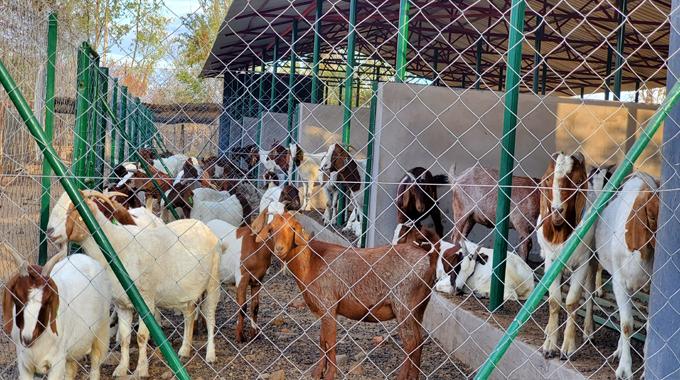Goat research breakthrough at LSU

Nqobile Tshili, Chronicle Reporter
LUPANE State University (LSU) has made a digital goat weight research breakthrough which will boost goat production by determining quantities of vaccine to be administered on each animal as well as pricing of the goats.
Goats are supposed to be given vaccinations according to the size of the animal.
At the moment, most goats are sold based on size estimate but the research that has been done by the university will empirically measure the carcass of the animal.
LSU is mandated to conduct research on the Dryland Agro Innovation and Industrialisation Programme with the aim of solving agriculture related challenges in arid regions of Matabeleland and other parts of the country.
The university has been conducting research on improving the quality of the country’s indigenous goats to ensure farmers get maximum value for their livestock.
The university brought goats from several parts of the country as part of research to improve the goat herd in dry regions.
This resulted in the death of 35 goats with the university saying this was triggered by the change in environment.
Responding to questions from the Chronicle, LSU Acting Director Innovation, Entrepreneurship and Industrialisation Dr Fortune Jomane said the research that has been conducted will lead to communal farmers producing goats at an industrial scale.
“The project has also provided a great platform for research and human capital development in line with the university mandate. Research we have conducted to date has given birth to a digital goat weight and carcass estimating application that will assist farmers and stockmen to predict the live weight and carcass weight of their goats through the use of a tape measure or simple things such as a ruler and a string. The application will help farmers become price determiners and not price takers,” said Dr Jomane.

Dr Fortune Jomane
“Furthermore, it can assist in drug administration since most drugs should be administered according to the weight of the animal. We believe this innovative tool is a good development for our goat producing industry. The project is also going to provide breeding stock for communal farmers to produce chevon and associated products on an industrial scale.”
He said the research that has been conducted is set to benefit students and staff at the university while also assisting communal farmers and Agritex extension officers.
Dr Jomane said this innovation is critical in fulfilling the university’s mandate as required by Education 5.0 to increase the provision of goods and services by higher and tertiary education institutions.
“The project aims to expand chevon production capacity in the first year, establish an out-grower scheme in the second year and implement value addition in the third year through producing and processing of skins apart from chevon and cheese production,” said Dr Jomane.
He said the university brought goats from several parts of the country and due to change of climate conditions 35 goats from Gwanda District in Matabeleland South died within the first month of arrival.

Dr Jomane said following the death of the animals, the university conducted a post mortem which showed that the animals died due to pulpy kidney disease which is usually triggered by stress due to environmental changes.
He said it was observed that the animals that came from predominantly sweet veld areas were the most affected.
“Pulpy kidney vaccines were administered and booster injections were administered after four weeks. It is noteworthy that the immunity does not last forever and we will continue to vaccinate periodically during susceptible periods such as when seasons change.
“The pulpy kidney problem has been brought under control and goats are acclimatising. Also noteworthy is that just like in most parts of the country, tick-borne diseases like heartwater are endemic in the Lupane district,” he said.
“With the large population of small ruminants that we now have, we have built a plunge dip to control tick-borne diseases. The measures will go a long way in controlling diseases in our flock.”
Dr Jomane said since the university launched the programme, its goats have increased by 80 within four months.
“The flock is actually increasing and is likely to reach 1 000 in one breeding cycle. The reproduction rate of goats is high and our flock will double in a single season.
“The initial loss of the 35 units is therefore outweighed by the growth that has been experienced to date.
“We have also facilitated weekly visits by a veterinary doctor to monitor the flock so that there is early detection of infections and prompt administration of corrective interventions,” said Dr Jomane.–@nqotshili








Comments